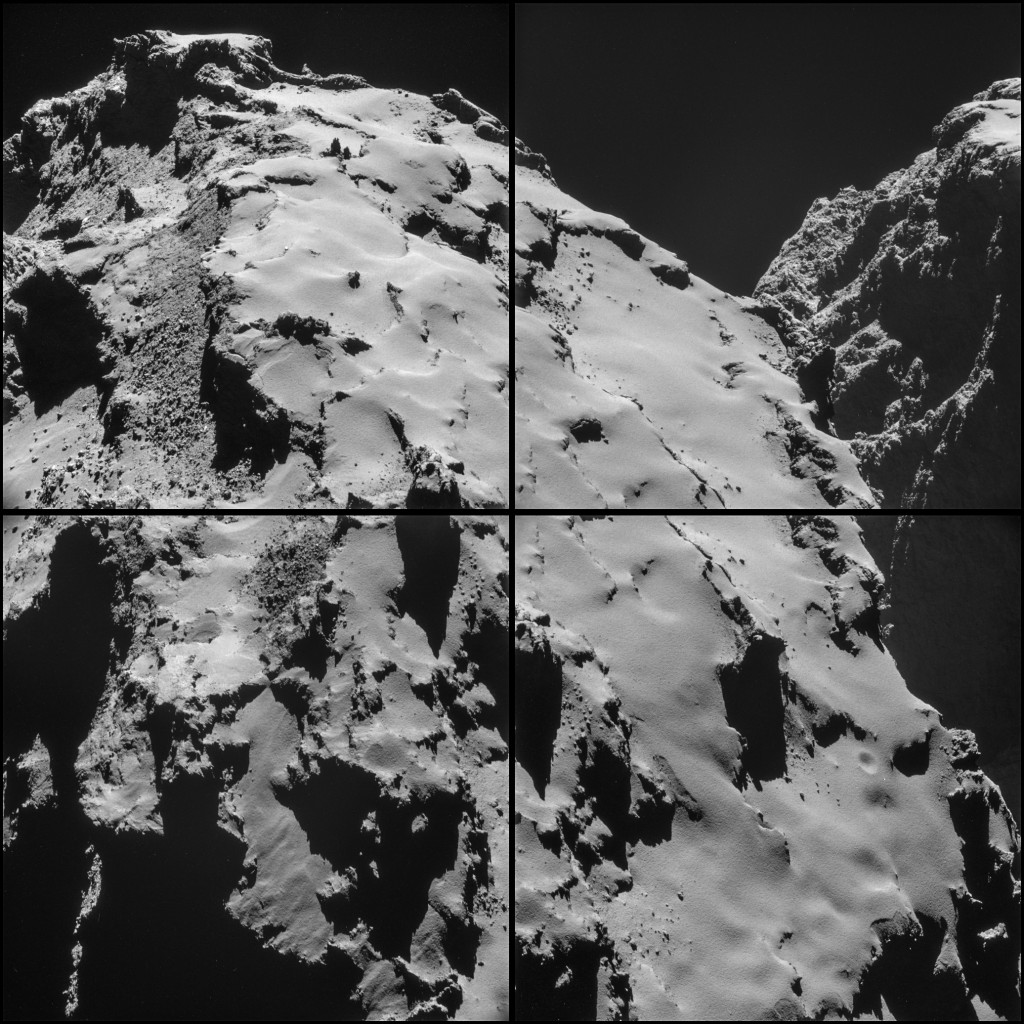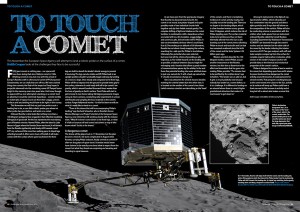
The European Space Agency’s Rosetta probe has shifted into a higher orbit around comet 67P/Churyumov-Gerasimenko in readiness for the release of its Philae lander on 12 November.
Two thruster firings this week raised the spacecraft’s orbit from 10 km to a distance of about 30 km from the centre of the comet. The first rocket burn on Tuesday lasted 82 seconds and was followed by a second firing of 90 seconds on Friday. Some additional burns to fine-tune Rosetta’s orbit will probably be required before the Philae lander is dispatched.
The manoeuvres mark the end of Rosetta’s closest orbits around the comet which is becoming more active as it moves closer to the Sun.
“From now on, the closest distances we will achieve will be via flybys to provide the science instruments on the orbiter the closest look at the comet,” mission scientist Matt Taylor said.
Before moving away from the comet, Rosetta’s navigation cameras took one last close up look from just 7.7 km above the surface. These most recent images show large areas coated in dust much like a snow covered mountainside. ESA says the instability of the dust and the activity of the comet might eventually lead to avalanches.
The closest images of comet 67P are still to come, when Philae descends towards its landing zone on the smaller lobe of the odd shaped comet on 12 November. It will be the first time a space probe has attempted to softly touchdown on the surface of a comet. Rosetta has already become the first mission to successfully fly alongside and orbit a comet.
Inside the magazine
You can read more about the planned landing of Philae in the November issue of Astronomy Now. Never miss an issue by subscribing to the UK’s longest running astronomy magazine.




